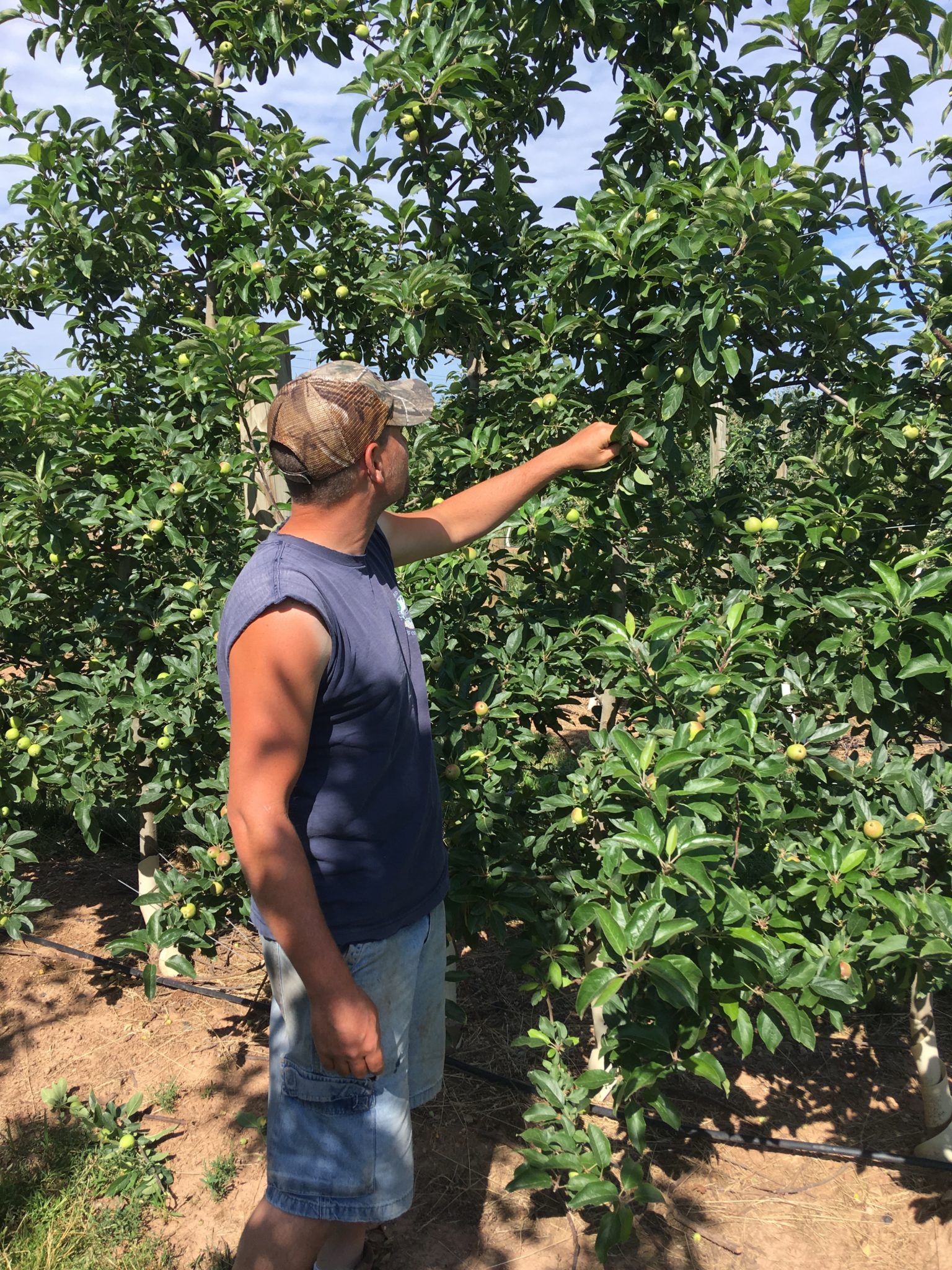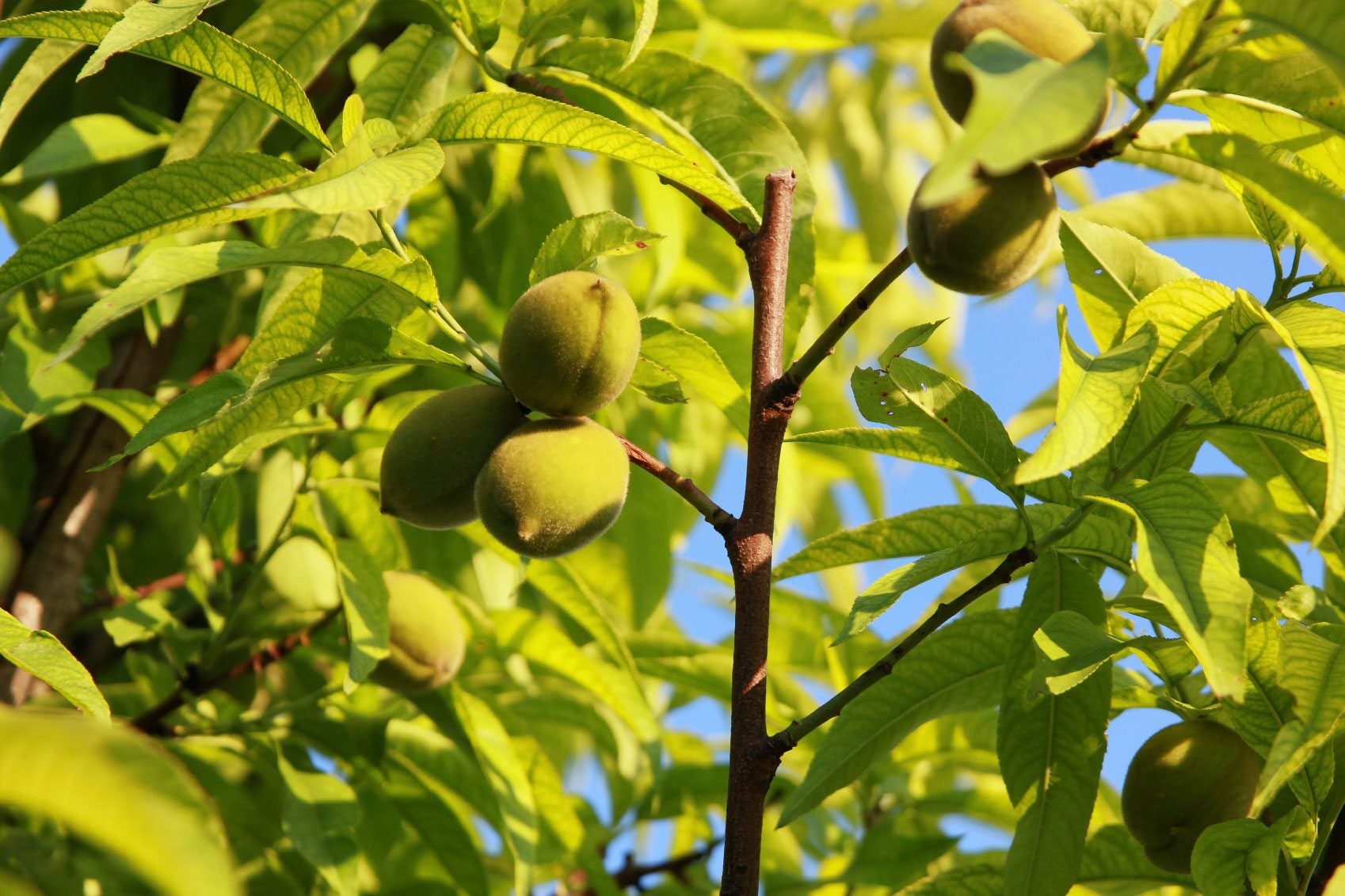To thin peach trees in the garden, prune crowded branches, remove weak or diseased limbs, and aim for a spacing of 6 to 8 inches between fruit. Thinning helps improve air circulation and light penetration, resulting in healthier trees and better fruit production.
Having peach trees in your garden is a rewarding experience, but it’s important to remember that proper care and maintenance are essential for their optimal growth. One crucial task in peach tree care is thinning. By carefully pruning crowded branches, removing weak or diseased limbs, and ensuring a spacing of 6 to 8 inches between fruit, you can improve air circulation and light penetration, resulting in healthier trees and better fruit production.
We will explore the steps involved in thinning peach trees, allowing you to enjoy a bountiful harvest and vibrant, thriving trees in your garden.

Credit: www.weaversorchard.com
Overview Of Thinning Peach Trees
Thinning peach trees in the garden is an essential task for maintaining healthy and productive trees. Thinning involves selectively removing some of the peach fruits when they are still small and immature. This process allows the remaining fruits to have enough space, nutrients, and sunlight to grow properly. It also helps in preventing branch breakage due to the excessive weight of fruits.
- Improved fruit quality: Thinning helps the remaining peaches to grow larger, juicier, and sweeter, resulting in better flavor and texture.
- Reduced disease and pest issues: Thinning helps increase air circulation and sunlight penetration, reducing the risk of fungal diseases and pests.
- Prevention of branch breakage: By removing excess fruits, you can prevent branches from becoming overloaded and breaking under the weight.
- Promotion of tree health: Thinning ensures that the tree’s resources are distributed efficiently, promoting overall tree health and vigor.
The ideal time to thin peach trees is when the fruits are approximately the size of a quarter. This usually occurs a few weeks after the petals fall from the blossoms. It is important to thin early to allow enough time for the remaining fruits to develop fully.
By following proper thinning techniques and timing it right, you can ensure healthy peach trees that produce high-quality and abundant fruits in your garden.
Step-by-step Guide To Thinning Peach Trees
Start by evaluating the overall health of your peach tree. Look for signs of disease or stress, such as yellowing leaves or fungal growth. Additionally, assess its growth rate and determine if it’s producing an excessive number of fruits.
Once you’ve assessed the tree’s health, you can proceed to identify the fruit clusters that need thinning. Look for clusters with multiple fruits closely growing together. Thin out the clusters to ensure each peach has enough space to develop fully.
When thinning the peach clusters, it’s essential to decide on the ideal spacing between fruits. Aim for a distance of around 6-8 inches between each peach. This spacing allows enough airflow and sunlight penetration to promote proper fruit development.
| Step | Description |
|---|---|
| 1 | Evaluate the tree’s health and growth |
| 2 | Identify fruit clusters for thinning |
| 3 | Choose an ideal spacing between fruits |
Following these steps will help you effectively thin your peach trees, resulting in improved fruit quality and overall tree health.
Importance Of Thinning Peach Trees
Thinning peach trees in the garden is an important practice that enhances fruit size and quality. By selectively removing some of the developing fruits, you allow the remaining ones to receive adequate nutrition and sunlight, resulting in larger and tastier peaches. Thinning also helps prevent limb damage from excessive fruit weight as the branches might bend or break under the load.
When it comes to thinning peach trees, it is crucial to start the process when the fruits are still young, usually about the size of a nickel. Carefully remove the excess fruits, leaving about 6-8 inches of space between each remaining fruit. This spacing allows for proper air circulation, reducing the risk of diseases.
In addition to enhancing fruit quality, thinning also aids in managing the overall size of the tree. By reducing the number of fruits, you prevent overcrowding and ensure that the tree’s resources are evenly distributed, promoting better growth and overall tree health.
Tools And Equipment For Thinning Peach Trees
- Pruning shears or scissors
- Disinfectant solution for tool cleaning
When it comes to thinning peach trees in your garden, having the right tools and equipment is crucial for the job. The first tool you will need is a pair of pruning shears or scissors to carefully remove excess branches and fruit from the tree. Make sure to choose a high-quality pair that is sharp and easy to handle.
Additionally, it is important to have a disinfectant solution on hand to clean your tools between cuts. This will help prevent the spread of any diseases or pests that may be present. Regularly cleaning and disinfecting your tools will ensure they remain in good condition and ready for use when needed. Remember to regularly inspect and replace any worn or damaged tools to ensure safe and effective tree thinning.
Thinning Techniques For Peach Trees
Thinning peach trees is an essential task to promote healthy growth and ensure a bountiful harvest. By following general principles and using proper techniques, you can achieve optimal results. Removing smaller or damaged fruits allows the tree to direct its energy towards fewer but larger, tastier fruits. Additionally, it prevents overcrowding, which can lead to disease and pest problems. Ensuring a uniform distribution of fruits is another key aspect of thinning.
This helps the tree maintain balance and prevents branches from breaking under the weight of concentrated fruit clusters. It is important to thin the tree at the right time, typically when the fruits are about the size of a dime. Thinning can be done by carefully handpicking or gently pruning excess fruits. By following these techniques, you can optimize the health and productivity of your peach trees.
Precautions And Tips For Thinning Peach Trees
The process of thinning peach trees in the garden requires a few precautions and tips to ensure optimum results. Over-thinning and under-thinning the trees could have negative consequences, so it is essential to follow these guidelines carefully. Early season thinning plays a significant role in maintaining tree health and promoting fruit development.
To avoid over-thinning, it is important to assess the tree’s overall health and vigor before starting. Thinning should be done gradually, removing only a certain percentage of fruit clusters or individual fruits. This allows the tree to distribute its resources effectively and ensures that the remaining fruits receive enough energy and nutrients for healthy growth.
On the other hand, under-thinning can also hinder the tree’s growth and fruit quality. Insufficient thinning can lead to overcrowding of fruits, affecting their size, flavor, and overall quality. Regular monitoring of the fruit load on the branches is crucial to identify any signs of under-thinning and take appropriate action.
| Precautions | Tips |
|---|---|
| Avoid removing too many fruits in one session | Gradually thin out fruit clusters to maintain balance |
| Assess tree vigor before thinning | Remove only a certain percentage of fruit |
| Monitor fruit load regularly | Identify signs of under-thinning and take action |
Common Mistakes To Avoid In Thinning Peach Trees
Learn how to effectively thin your peach trees in your garden and avoid common mistakes with these expert tips. Discover the key guidelines for successful thinning and maximize your tree’s growth and productivity.
Post-thinning Care For Peach Trees
After thinning your peach trees, it is essential to provide proper care to promote their growth and productivity. Nutrient management and fertilization play a crucial role in ensuring the health of your trees. Supplying the right nutrients at the right time will optimize their growth and fruit production. Use a balanced fertilizer, high in nitrogen, phosphorus, and potassium, to support overall tree vigor. Apply it evenly around the drip line and water thoroughly afterward.
Watering is vital for tree health, especially during dry periods. Adequate moisture should be maintained by providing regular irrigation, making sure the soil is consistently moist but not waterlogged. In addition, keep an eye on any potential diseases or pests that may attack your trees. Regular monitoring and early intervention can prevent significant damage. By following these care practices, your peach trees will thrive and reward you with bountiful harvests.
Frequently Asked Questions Of How To Thin Peach Trees In Garden
How Do You Thin Peach Trees In The Garden?
Thinning peach trees in the garden is important for better fruit quality and healthy tree growth. Start by removing small, diseased, or damaged fruits and those that are too close together. Aim for a spacing of about 6 to 8 inches between the remaining fruits to allow them to develop properly.
When Is The Best Time To Thin Peach Trees?
The best time to thin peach trees is after the fruit has set and reached about the size of a dime. This is usually around 4 to 6 weeks after full bloom. Thinning at this stage ensures that the remaining fruits have enough space to grow and ripen properly.
Why Should I Thin Peach Trees In My Garden?
Thinning peach trees in your garden helps improve fruit quality and tree health. By removing excess fruits, you allow the remaining ones to receive adequate nutrients, sunlight, and air circulation. This results in larger, sweeter, and more flavorful peaches, while reducing the risk of diseases and pests.
How Many Peaches Should I Leave On Each Tree?
The number of peaches to leave on each tree depends on various factors, including tree age, size, and vigor. Generally, leave about one peach per every 6-8 inches of shoot length. This ensures enough spacing for the remaining fruits to develop properly and avoids overloading of the branches, which may lead to fruit drop or smaller fruit size.
Conclusion
Thinning peach trees in your garden is a crucial task that promotes healthier growth and higher fruit production. By removing excess branches and spacing out the remaining ones, you ensure ample sunlight penetration and air circulation. Thinning also helps avoid overcrowding and disease susceptibility.
With proper knowledge and tools, you can effectively thin your peach trees for optimal results. Happy gardening!

